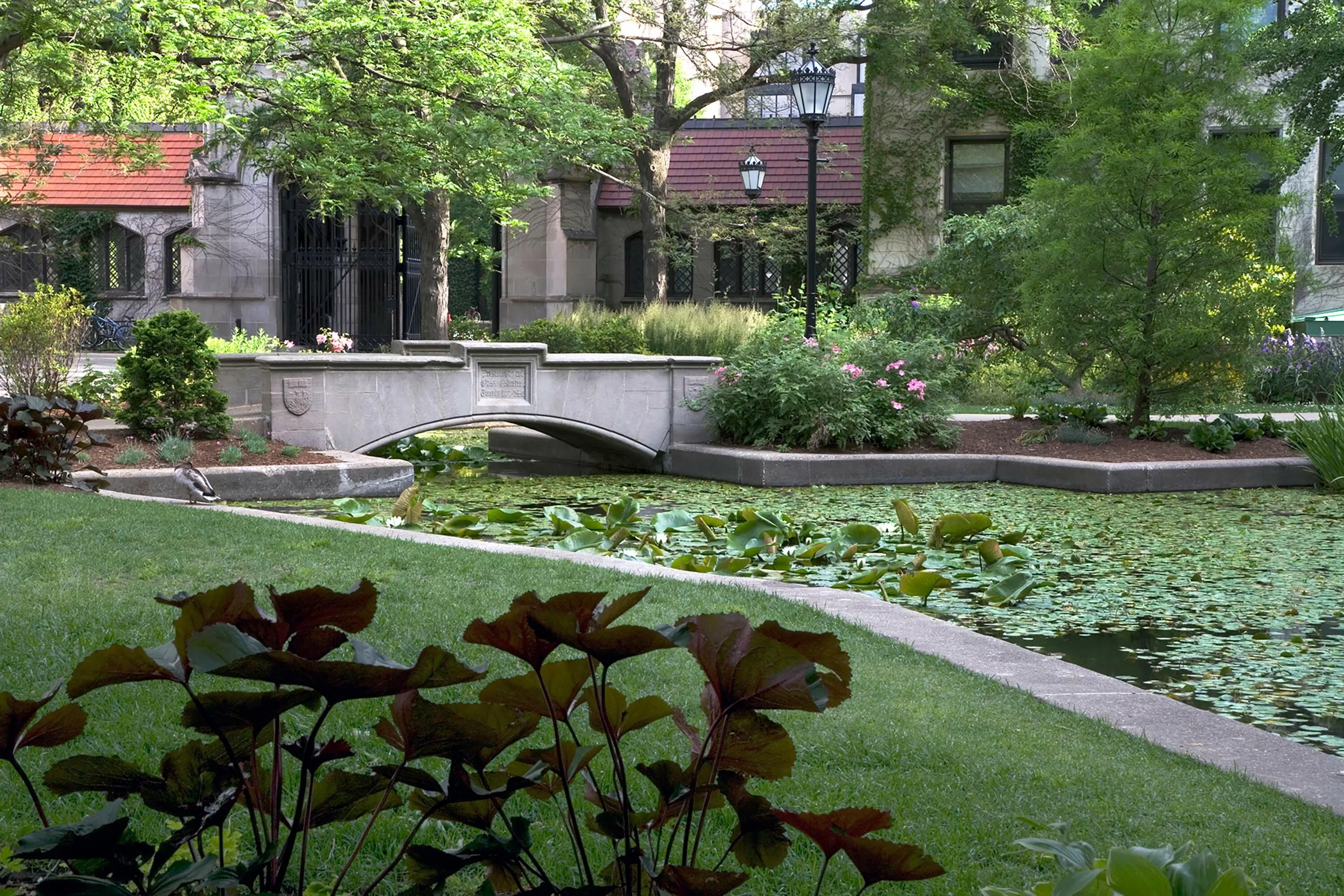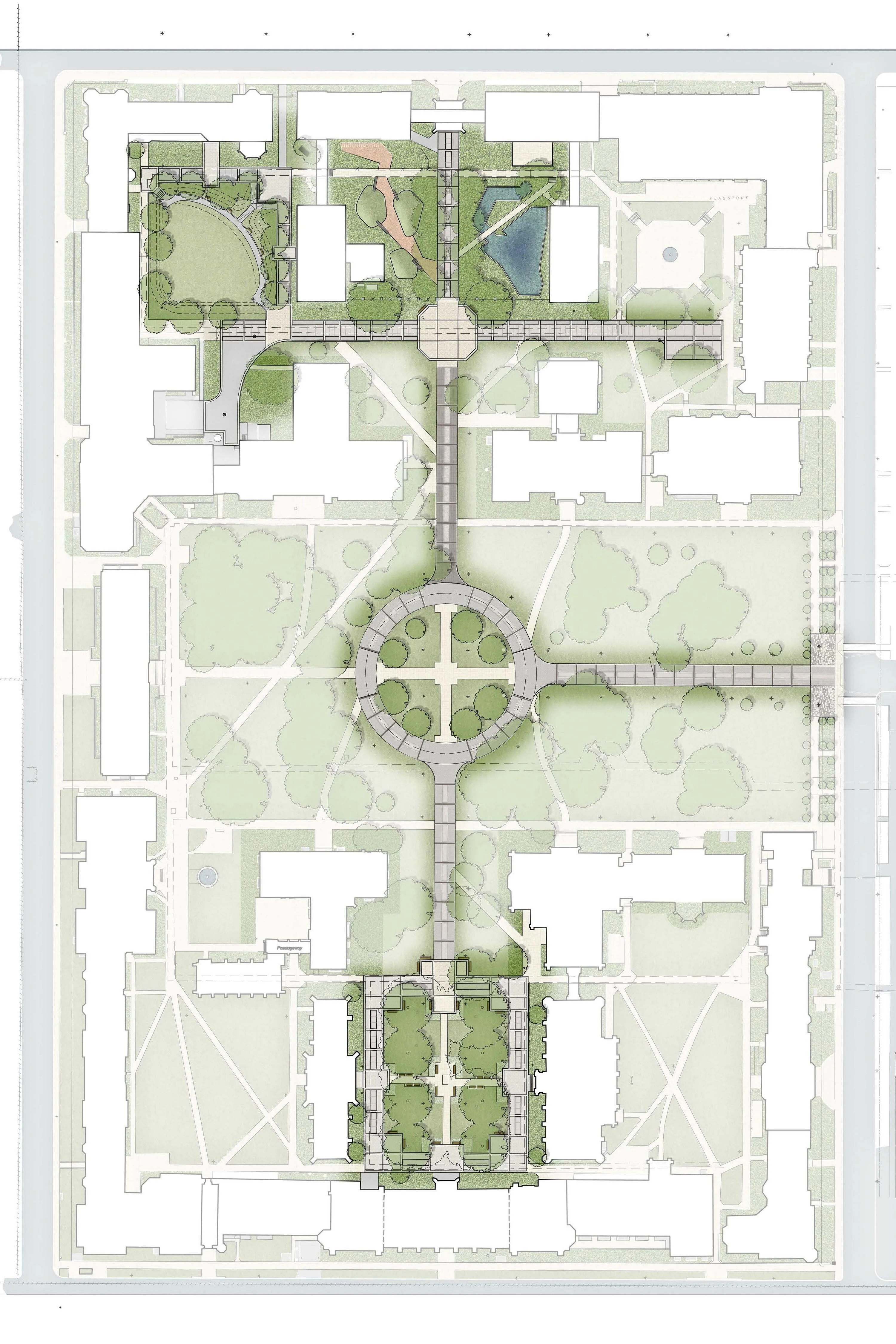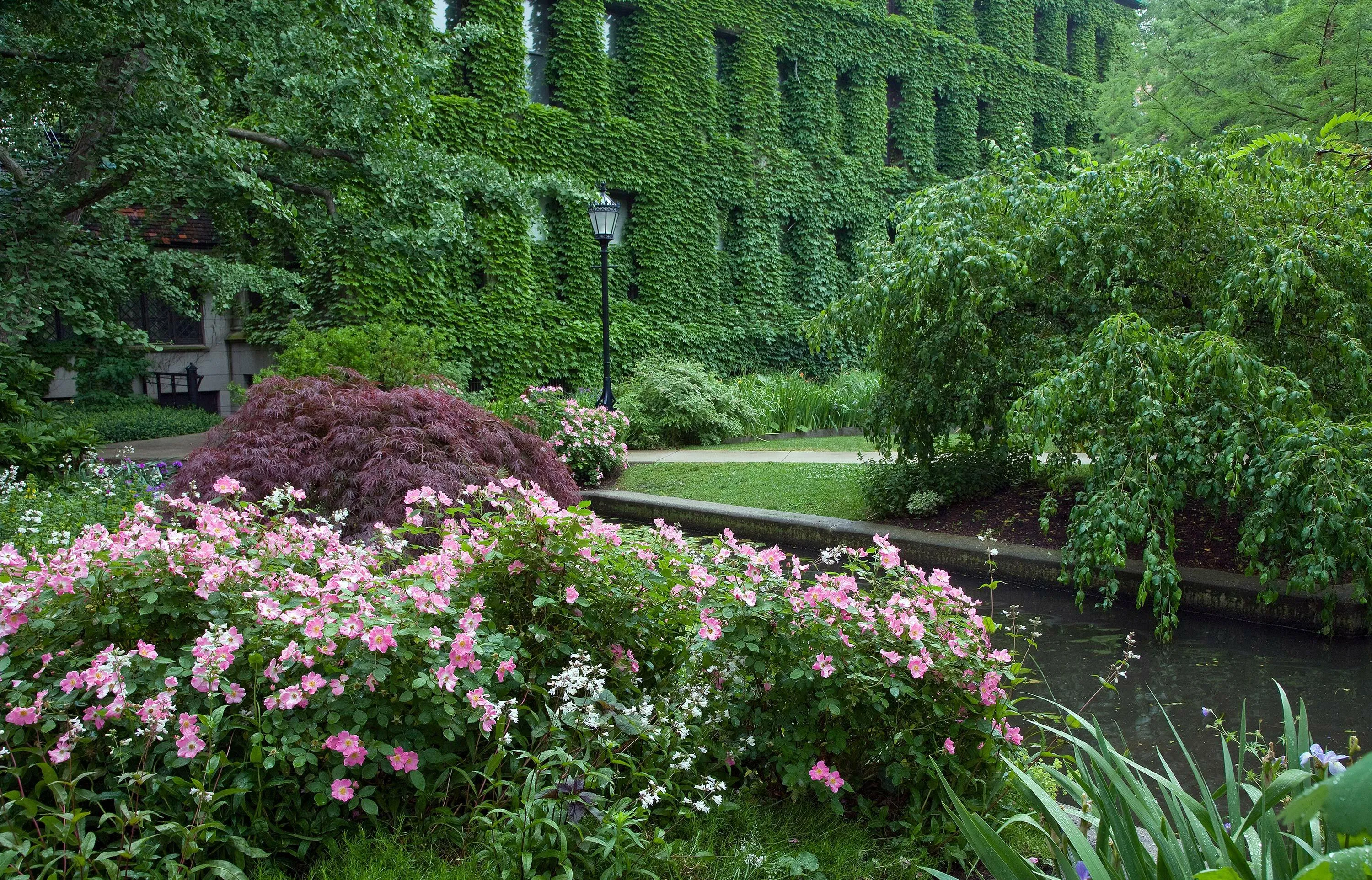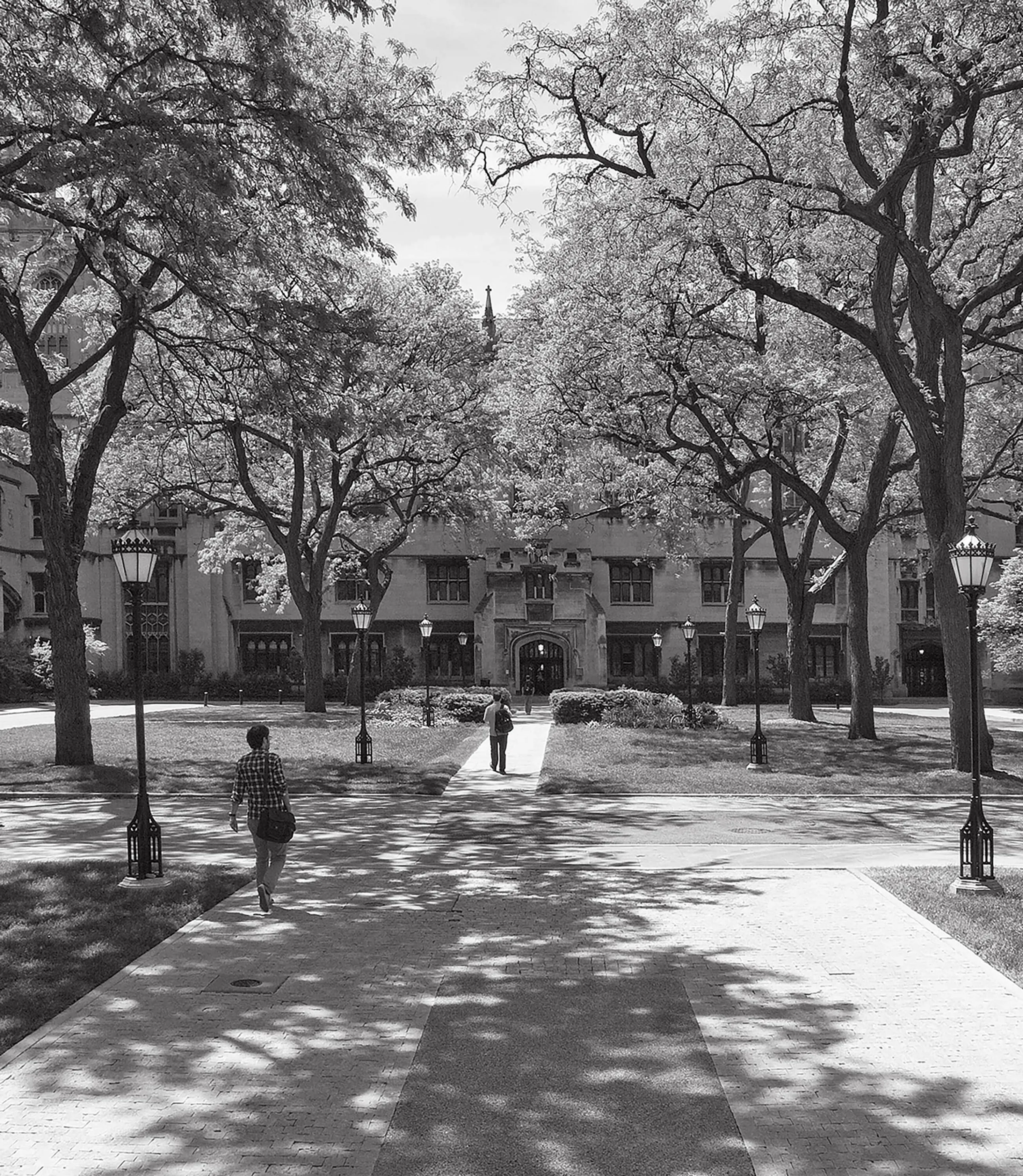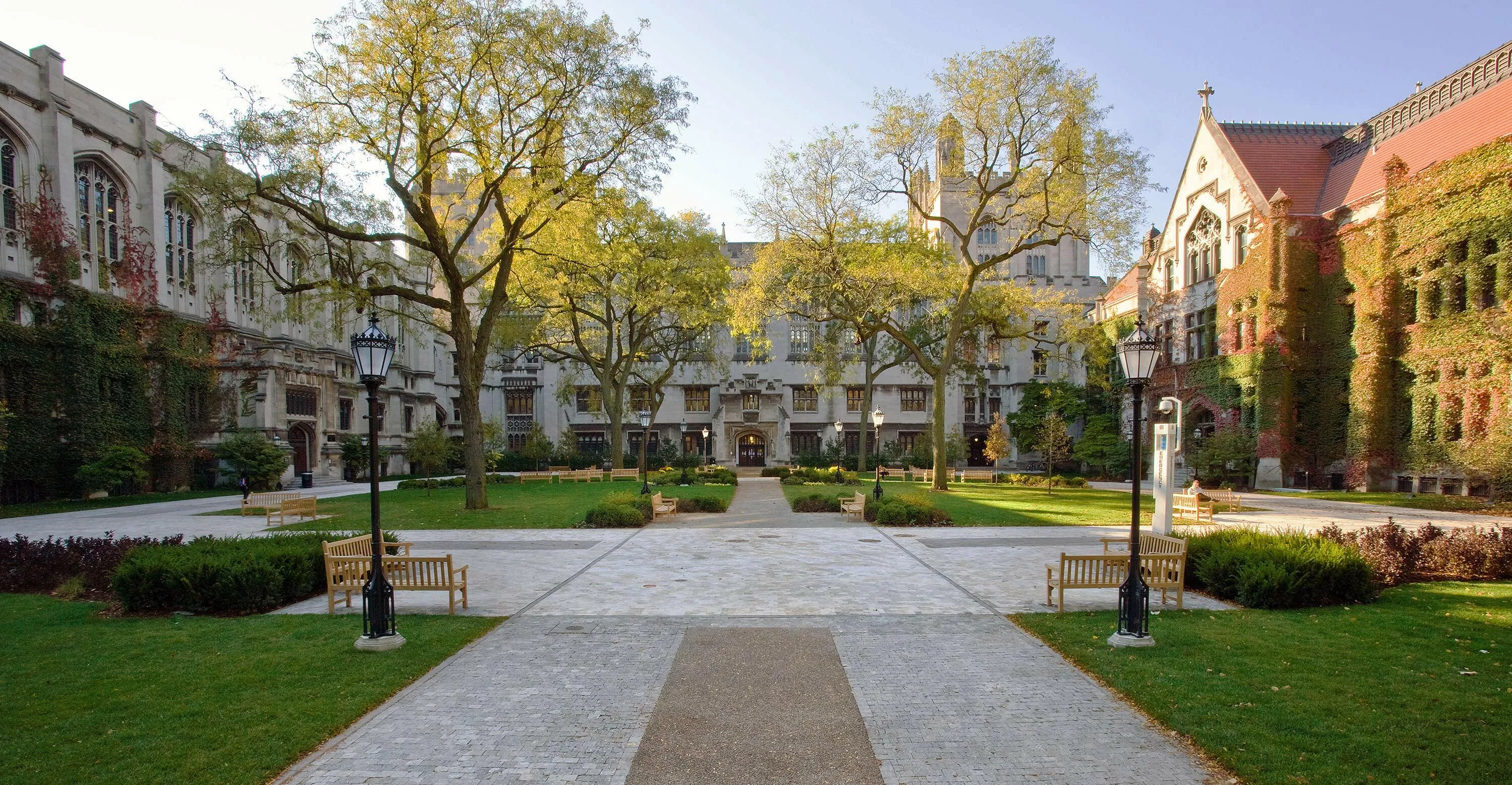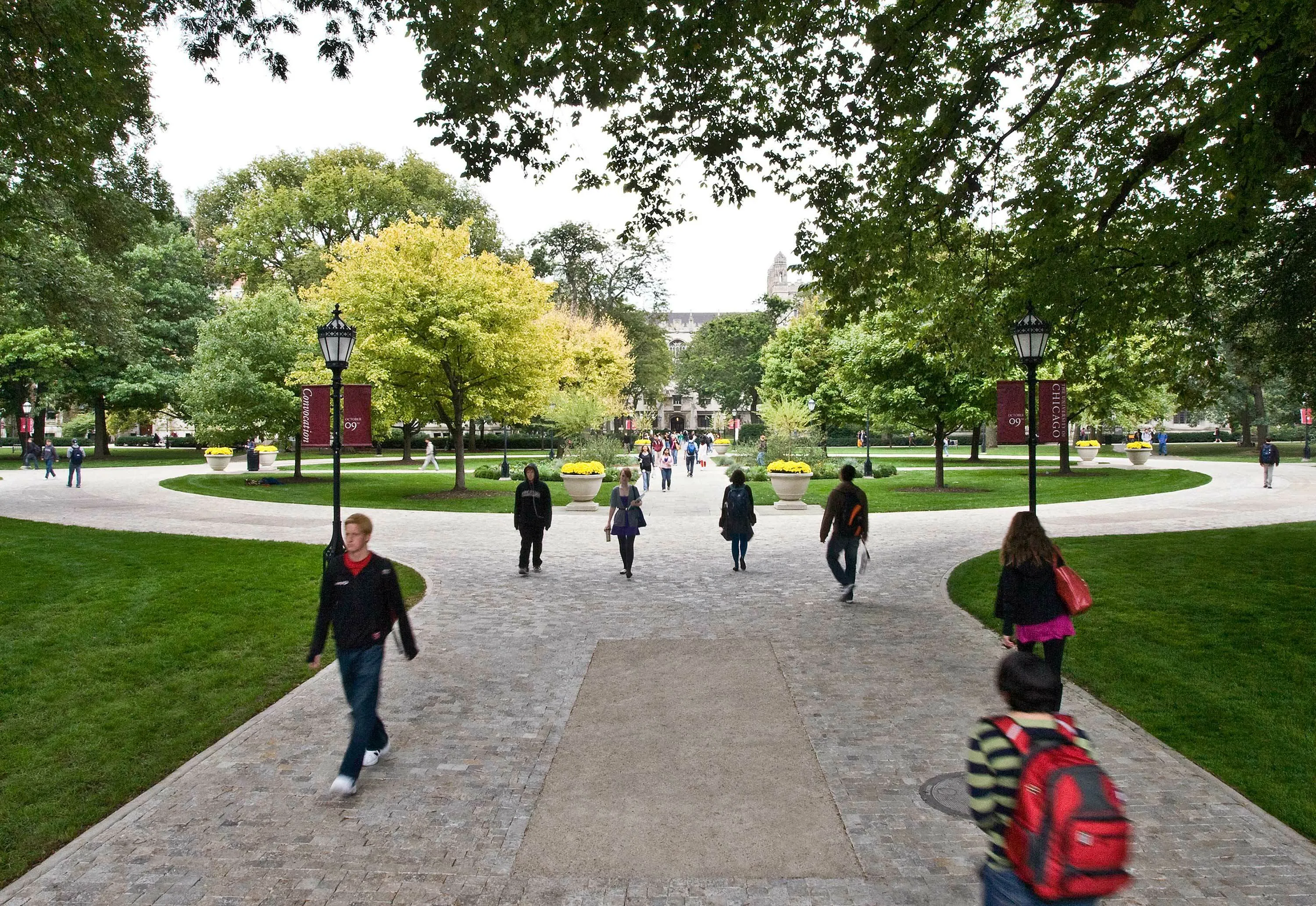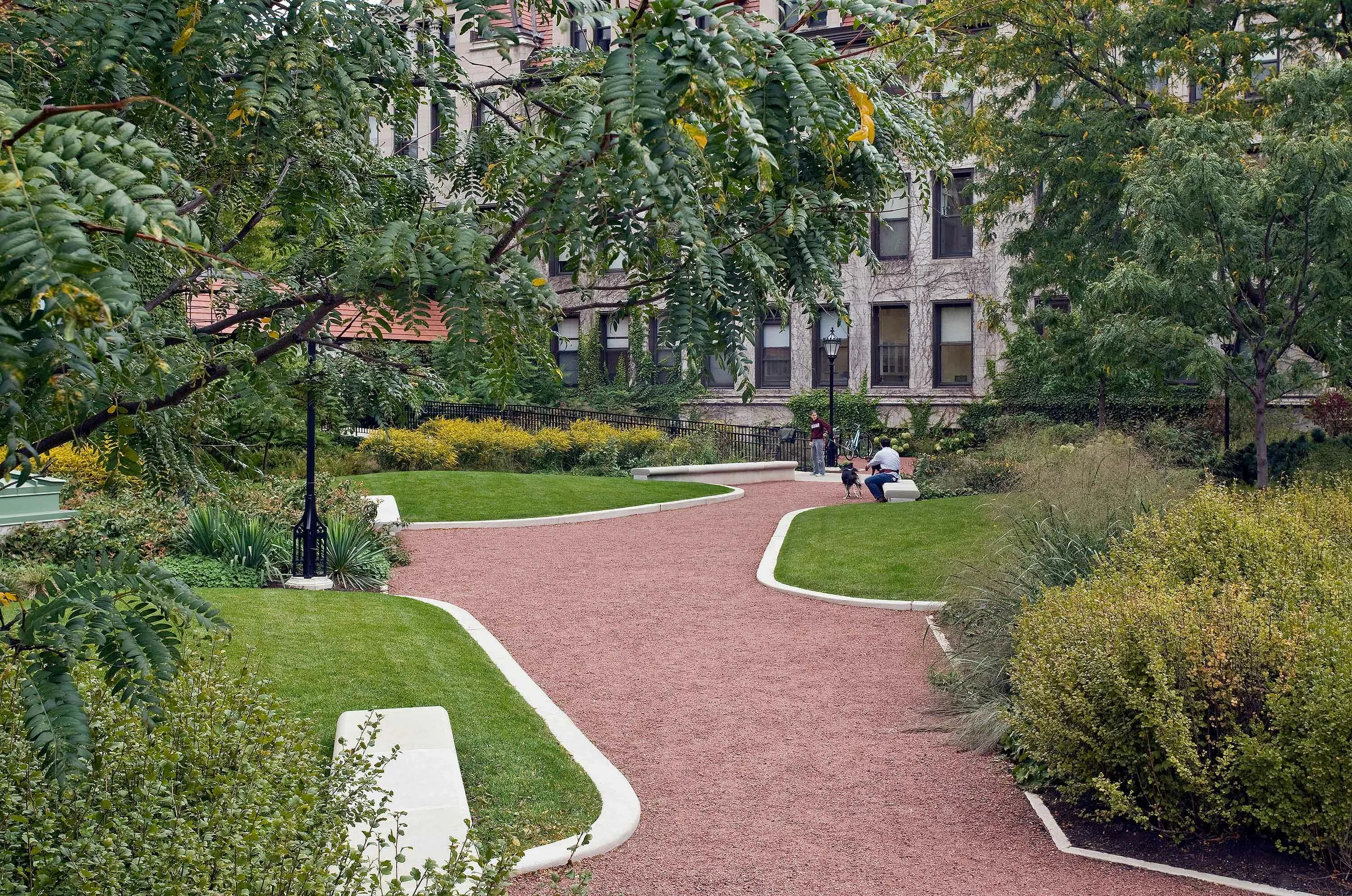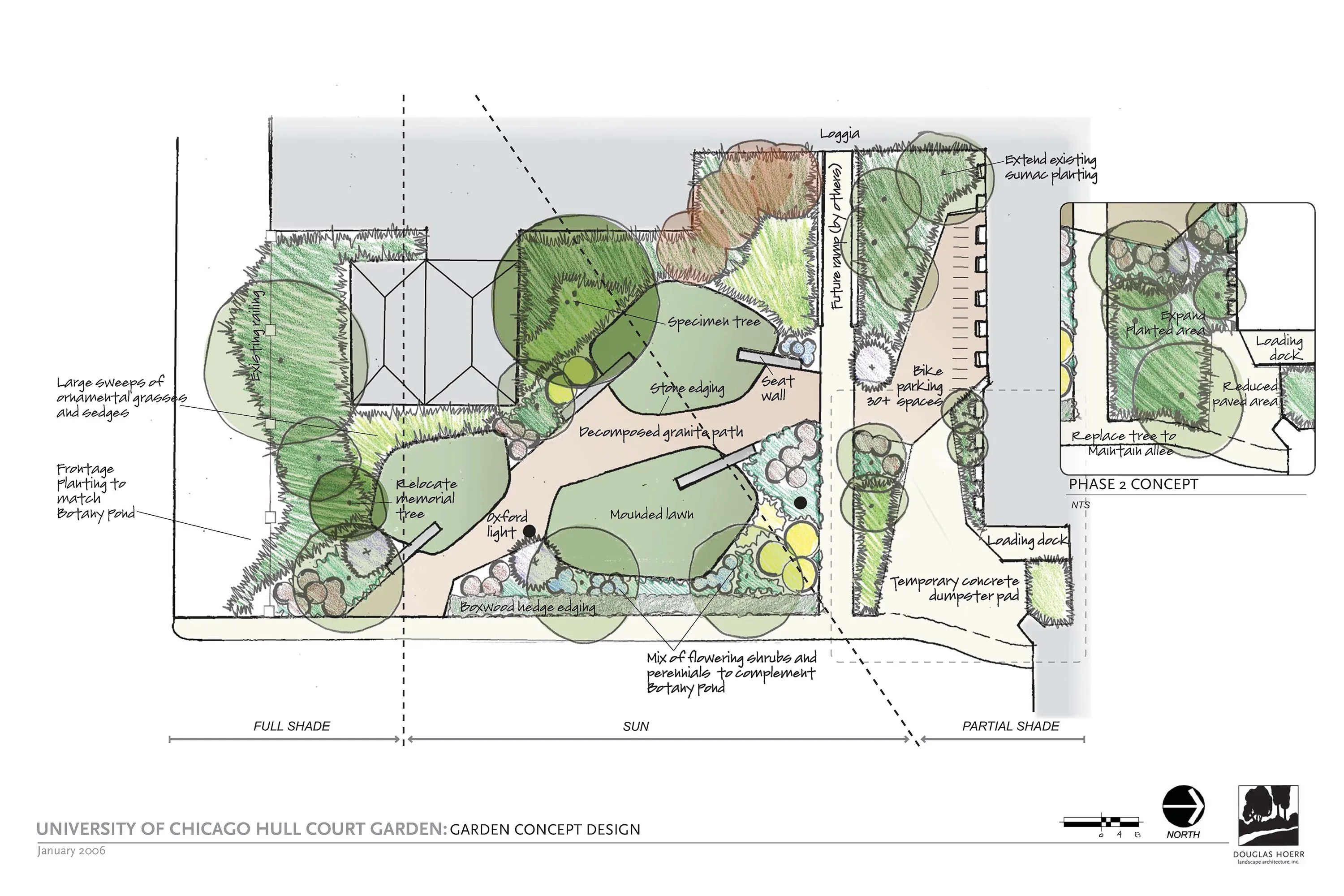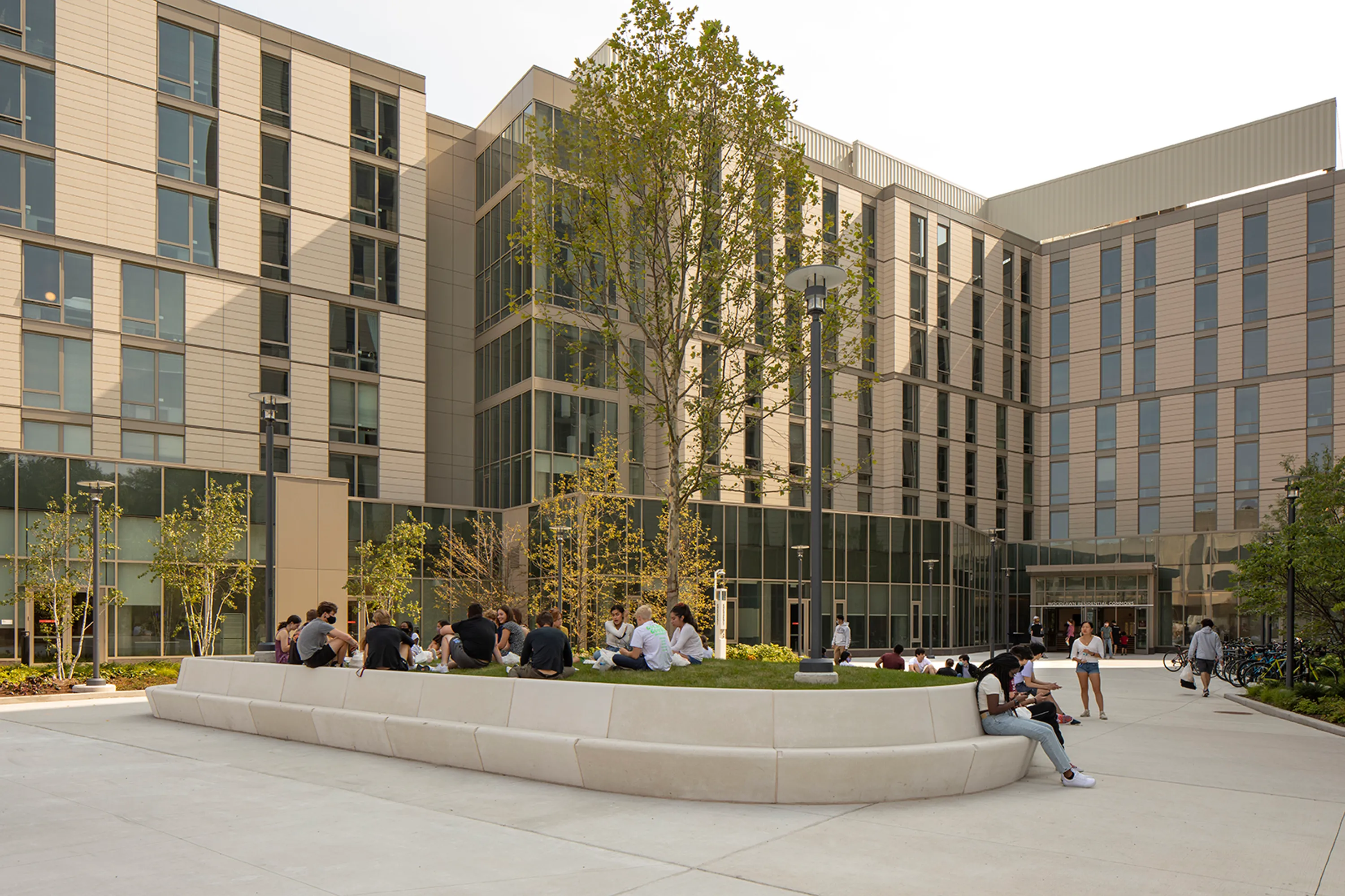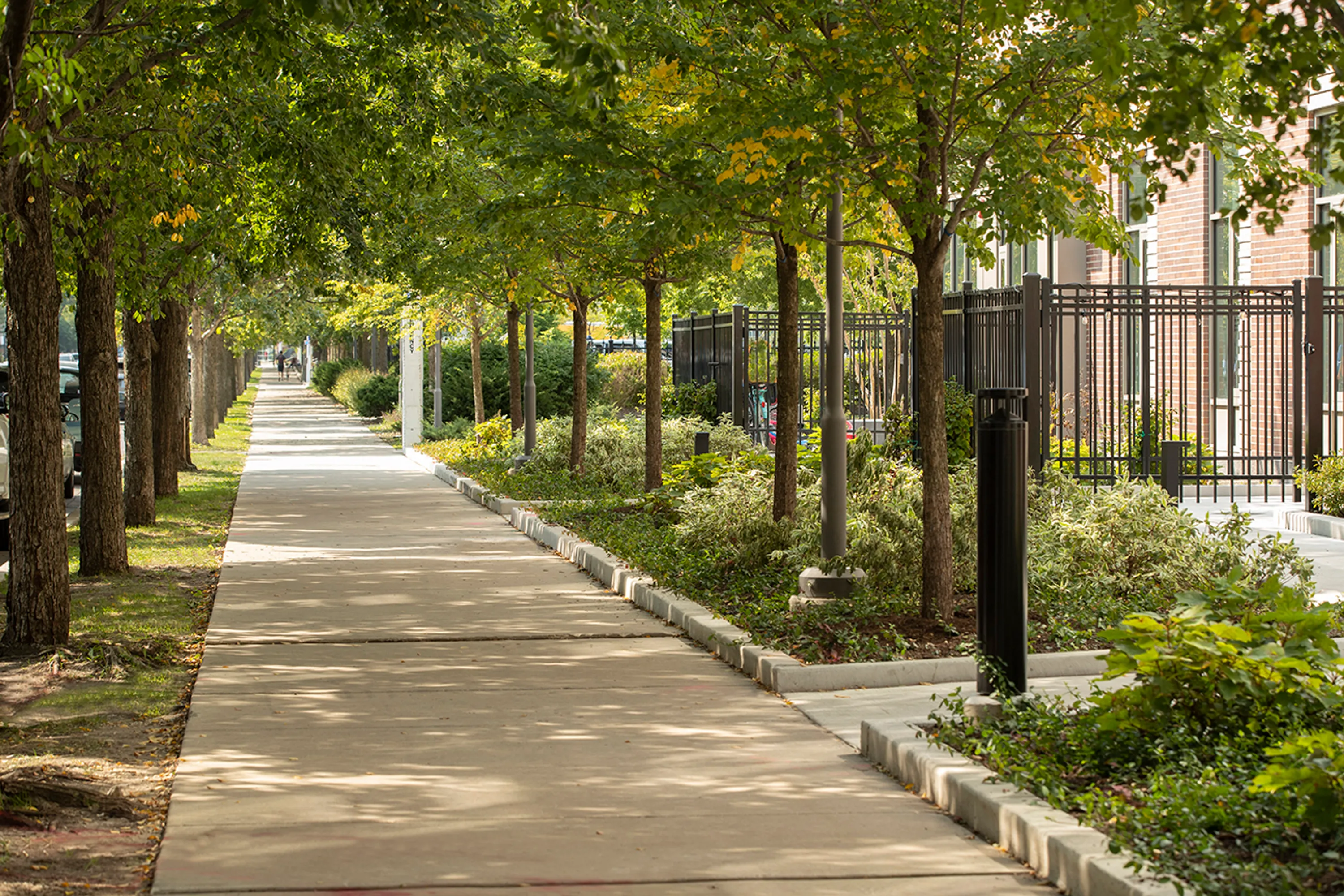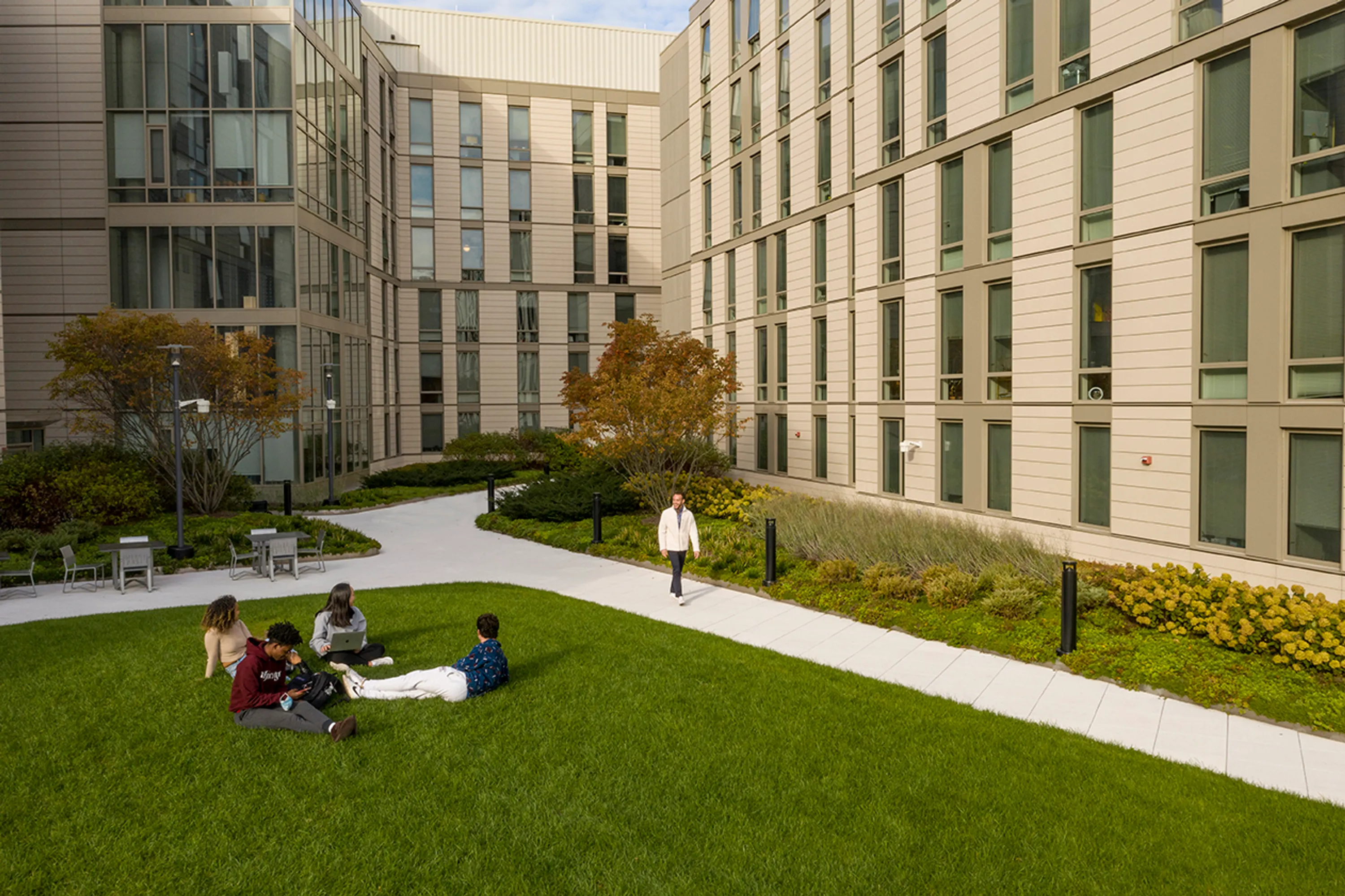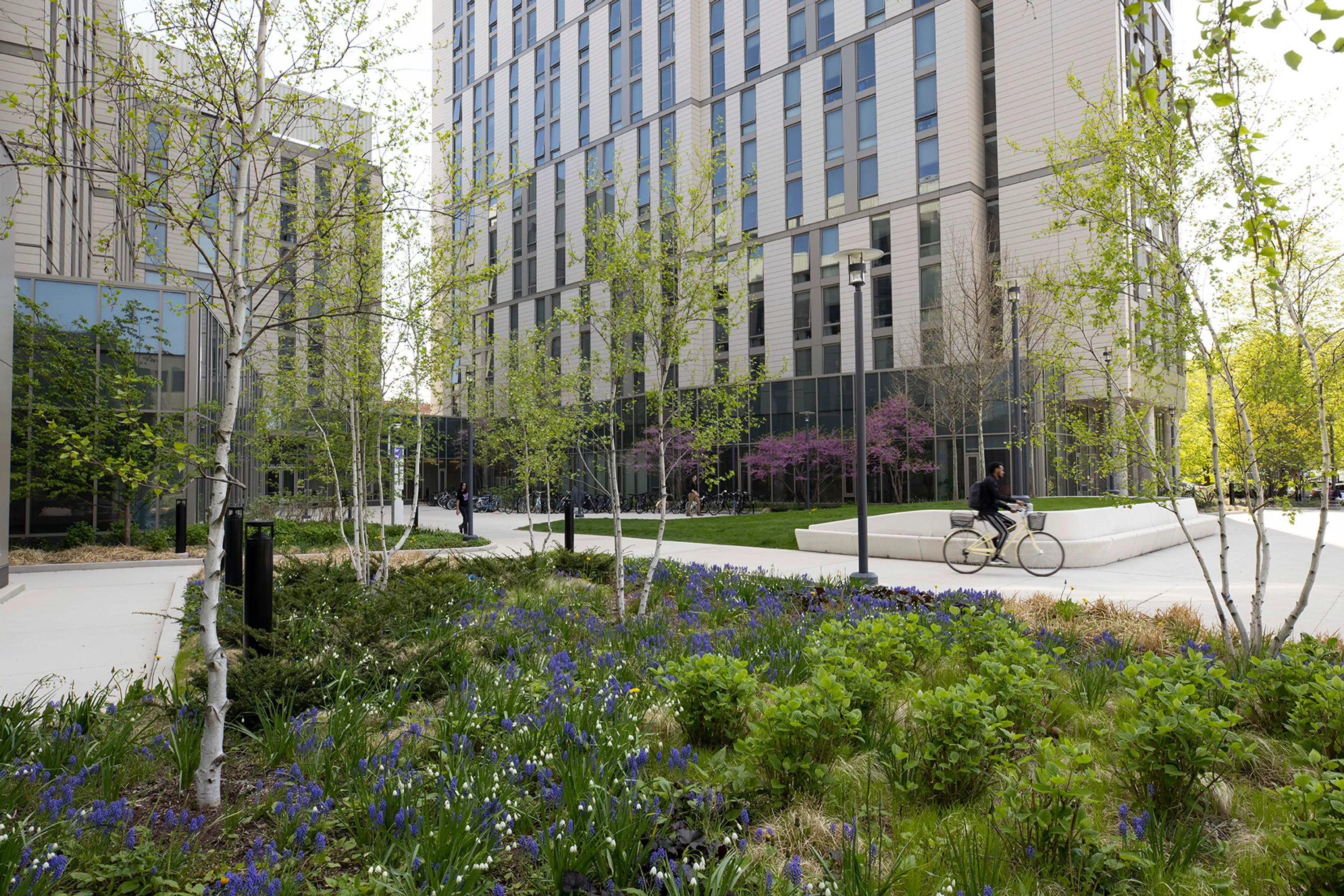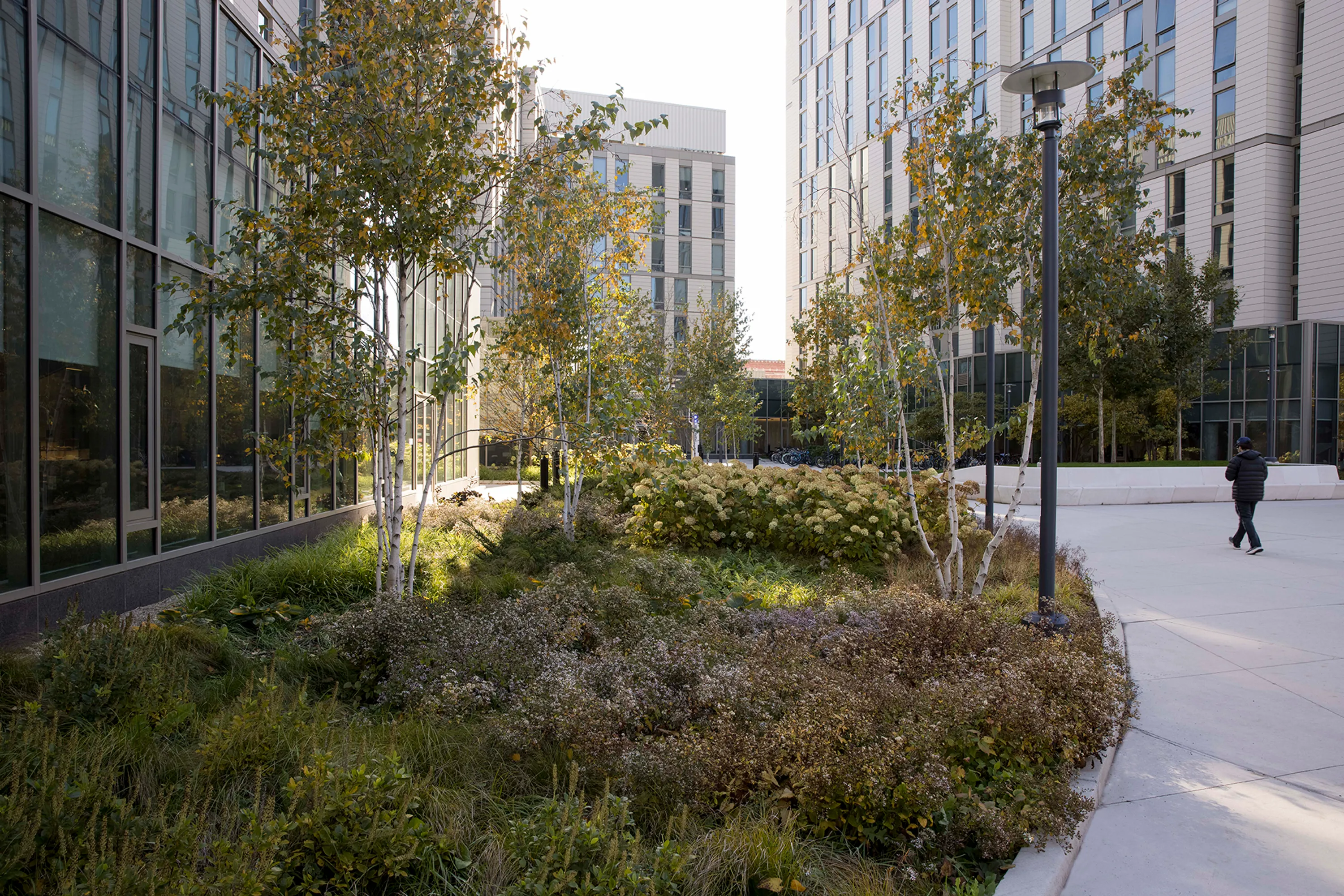Botany Pond
When the Olmsted Brothers designed Botany Pond in 1903, the University was taking definitive steps to achieve this by forging a botanic identity – an aesthetic specific to the University that celebrated horticulture as a placemaking tactic.
The pond became an outdoor laboratory of sorts, enabling students to observe, study, and learn from the aquatic plants and animals living within its waters. Over time, however, classes were using the pond as a plant-study facility less and less, and though it remained a coveted place by students for studying, eating, and napping, it evolved into a grassy area with far less botanic diversity.
In 2001 when the University of Chicago received a gift to create spectacular gardens on campus over a ten-year period, the school saw an opportunity to recommit itself to its botanic aspirations. Botany Pond was among the priority settings outlined in the gift due to its central location on the quadrangles and its proximity to a primary pedestrian route through campus, and Hoerr Schaudt was chosen to lead the redesign, restoring the pond to revive its botanical splendor and enhance the quad so popular among students.
The revitalized pond is richly planted with azaleas, pickerelweed, iris, lily of the valley, a Japanese maple, and several bald cypress. The restoration naturalizes one of the pond's edges by sloping the bank gradually into the water, and further blurs the line between land and water by planting several of the bald cypresses in the pond itself. Hoerr Schaudt strengthened several sight lines into the pond area and softened the dominance of the surrounding architecture at the edges of the garden with plantings along building perimeters. New historical replications of campus lanterns illuminate the pond at night.
